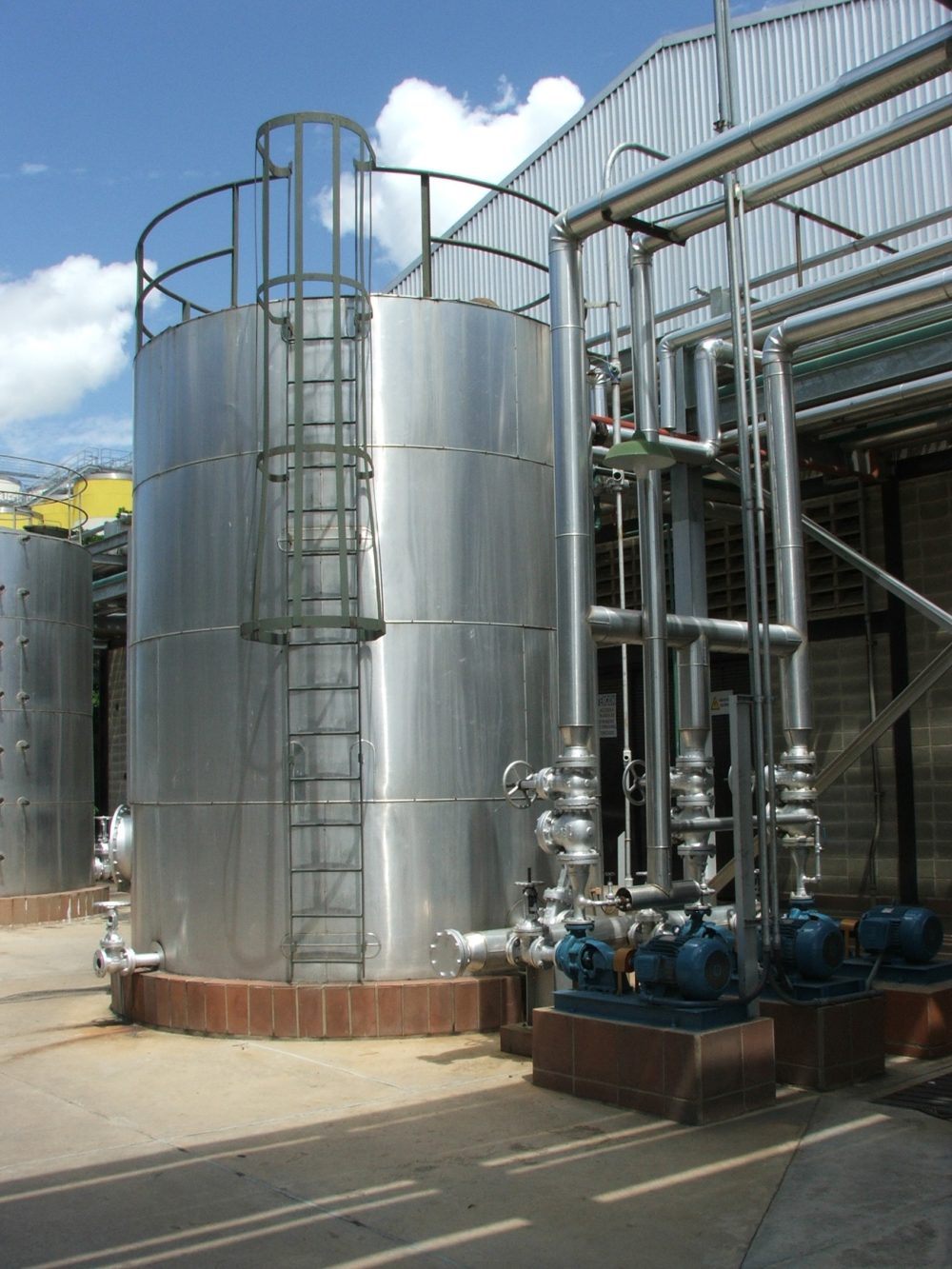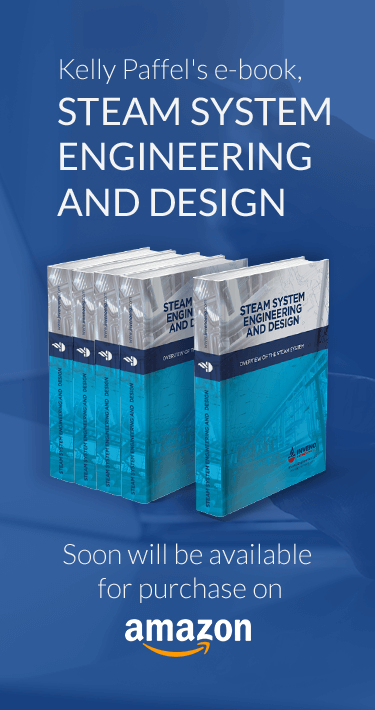Condensate Recovery, Advantages of Returning Condensate – Best Practice No. 1

Do you want this article in PDF format? Download it here:
Download a PDFBEST PRACTICE NO. 1
1. ADVANTAGES OF RETURING CONDENSATE
Condensate
Steam is comprised of two types of energy; latent and sensible energy. When steam is supplied to a process application (heat exchanger, coil, tracer, etc.); the steam vapor releases the latent energy to the process fluid and condenses to a liquid better known as condensate. The condensate contains the sensible energy from the steam vapor. The condensate can contain as much as 16% of the total energy in the steam vapor depending on the steam pressures.
One of highest return on investments is to return condensate to the boiler plant. As fuel costs continue to rise, it is imperative to focus on recovering condensate in all industrial steam operations.
Condensate contains not only water, but also boiler treatment chemicals and energy that was transferred during the combustion process in the boiler.
Condensate therefore, needs to be returned to the boiler in order to:
- Improve energy efficiency
- Reduce chemical cost
- Reduce make-up water costs
- Reduce sewer system disposal costs
- Meet environmental regulations
Unfortunately, a large percentage of industrial plants are wasting the condensate from the steam system and are not taking a proactive step in returning condensate to the boiler plant. Condensate that is being returned is still losing the thermal energy due to uninsulated tanks, uninsulated condensate pipe, valves and fittings. The “Best Practice” for condensate is that all devices in the condensate system are insulated to prevent thermal energy losses.
If condensate is not returned to the boiler plant, the steam system has to make-up the loss with cold untreated raw water that has to be prepared for the boiler operation. The preparation of the make-up water has a cost for the preparation and the make-up water is going to contain substantially lower BTU content that has to be raised in the deaerator or atmospheric feed water heater. This energy addition will add even more cost to the steam operation. The raw water has to be chemically prepared for the boiler operation, which is an added cost to the boiler plant operation.
2. Condensate Return Benchmark
With today’s high energy cost we must return the highest percentage of condensate back to the boiler plant to be reused in the boiler.
The benchmark for the optimum condensate return percentage is up to 90%. This benchmark is possible if the plant does not have requirements of direct steam injection for process applications.
2.1 Justification to Return Condensate (Energy Calculations)
Improve Energy Efficiency
Below is an example of a typical operating steam system.
- Average steam flow 44,000 lbs per hour
- Cost per MBTU at the plant $ 15.30 (unloaded cost)
- Operation (24 hours /7 day per week) (8760 hours)
- Operating steam pressure
- Steam temperature 150 psig
- Steam total energy (hg) 1195.1
- Makeup water temperature 55oF
- Makeup water BTU content (hm) 23 Btu
- Condensate return temperature 212oF
- BTU content of the condensate being returned (hc) 180.33
No condensate returned to the boiler plant
- (hc – hm) = energy loss per lb
- (180.33 – 23) = 157.33 BTU per lb
- 44,000 lbs of steam = 44,000 lbs of condensate (90% return) = 39,600 lbs
- 39,600 lbs x 157.33 (BTU per lb) = 6,230,268 BTU’s
- 6.230268 x $ 15.30 = $ 95.32 (per hour cost)
- $ 95.32 x 8,760 (hours in a year) = $ 835,003.20
** $ 835,003.20 per year
The potential savings is based on the amount of energy required to elevate the make-up water up energy content (sensible energy) to that energy level of condensate being returned at in a gravity designed condensate system. The calculation does not take into account the savings from chemicals, water and sewer costs. It also does not consider the effect of bringing back the condensate at higher pressures, resulting in greater savings (See Best Practice No.8 – High Pressure Condensate Return Systems).
The above is calculated with no condensate being returned to the boiler, but most industrial plants are returning at least a small percentage of condensate. Each plant should evaluate the cost of failing to return condensate and set forth a roadmap for returning condensate.
2.2 Reduce chemical cost
If condensate is returned, then the need for make-up water is reduced. Lowering the quantity of required make-up water will result in lower requirements for boiler chemicals.
2.3 Reduce make-up water costs
Water costs are rising everywhere and a high percentage of condensate return will reduce the total make-up water costs.
2.4 Reduce sewer system disposal costs
Sewer system costs are directly related to the intake of water. If condensate is not being returned, the condensate is being drained to the sewer, adding to the cost for processing the sewer waste.
2.5 Meet environmental regulations
Environmental regulations may require water to drain must be treated. Condensate returned to the boiler process reduces the water to drain and amount of water that falls under regulatory control.
2.6 What prevents the condensate energy from being returned?
One must understand the issues that prevent the condensate from being returned to the boiler plant so the plant can establish corrective methods.
2.7 Pumping condensate
Selecting correct condensate pumps with the proper net positive suction head (“NPSH”.) A number of condensate pumps on the market can only permit condensate temperatures of less than 200oF. Condensate temperatures will be close to atmospheric saturation temperature of 212 oF,. Therefore the condensate pumps must have the proper NPSH. Failure to design to the proper NPSH will result in pump cavitation and damage to the seals and impeller in a short period of time.
2.8 Steam trap issues
Under sizing and improper installation of steam traps cause the steam traps to malfunction. Too often a short solution to the problem is to drain the condensate to sewer. When many steam trap installations have the drain valves open to remove the condensate from the process, therefore achieving proper temperatures.
2.9 Condensate line corrosion
The condensate system will produce carbonic acid as a result of excessive carbon dioxide in the system. The highest concentration of the carbonic acid will be in the condensate return lines because carbon dioxide dissolves in cooling condensate.. The majority of condensate lines are installed with schedule 80 steel pipe and threaded connections. The steel will deteriorate from the condensate corrosion but the pipe threads are typically more susceptible to deterioration due to corrosion. Slowing the corrosion affects on the system, plants should use stainless for condensate pipe, valves, and avoid the use threaded connections.
2.10 Condensate system insulation
Industrial steam system components must be insulated to insure the thermal energy in the condensate is not lost. Everything in the condensate system over 120 °F should be insulated. Insulation will also help protect personnel from hot condensate system components, thus improving plant safety.
- Condensate lines
- Condensate tanks
- Valves
- Some steam trap types
2.11 Leaks
Plants do have leaks from malfunctioning components in the steam and condensate system, which can contribute to loss of condensate.
2.12 Flash steam losses
Flash steam is loss from condensate tank vents that are venting to atmosphere. We have addressed flash steam losses in “Steam Best Practices No. 7 – flash steam.
2.13 Summary
Condensate is one of the top five items that must be targeted in a steam and condensate system to reduce energy cost and improve reliability.










